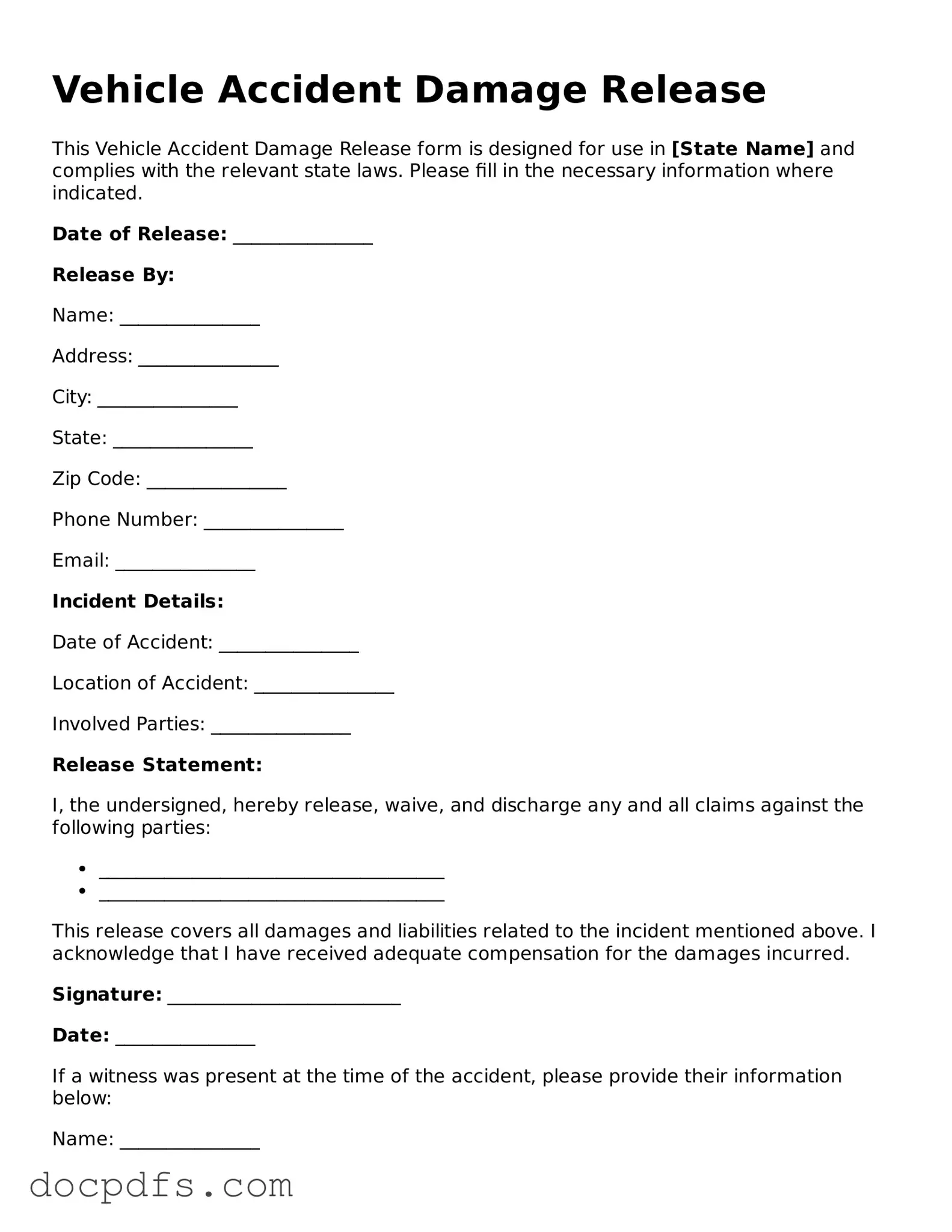The Vehicle Accident Damage Release form is a legal document that allows an individual to release another party from liability for damages caused in a vehicle accident. By signing this form, the person acknowledges that they have received compensation for the damages and agree not to pursue further claims related to the incident.
This form is typically used by individuals involved in a vehicle accident who have reached a settlement with the other party. It is important for both parties to agree on the terms of the settlement before signing the form. This document is especially useful when the accident has caused property damage or minor injuries.
To complete the Vehicle Accident Damage Release form, the following information is usually required:
-
Names and contact information of both parties involved in the accident.
-
Date and location of the accident.
-
Description of the damages incurred.
-
Details of the settlement amount agreed upon.
-
Signatures of both parties, along with the date of signing.
While it is not legally required to have a witness when signing the Vehicle Accident Damage Release form, having one can provide additional validation of the agreement. A witness can help confirm that both parties signed the document willingly and understood its contents.
If you choose not to sign the Vehicle Accident Damage Release form, you may retain the right to pursue further claims for damages. However, this could lead to prolonged negotiations or legal proceedings. It is advisable to carefully consider the implications of not signing the form, especially if a settlement has already been reached.
Once the Vehicle Accident Damage Release form is signed, it typically cannot be revoked. This means that you cannot change your mind about the release of liability. It is crucial to ensure that you are satisfied with the terms of the settlement before signing the document.
You can obtain a Vehicle Accident Damage Release form from various sources, including:
-
Legal document preparation services.
-
Online legal form providers.
-
Insurance companies, which may have their own version of the form.
-
Local government offices or legal aid organizations.
